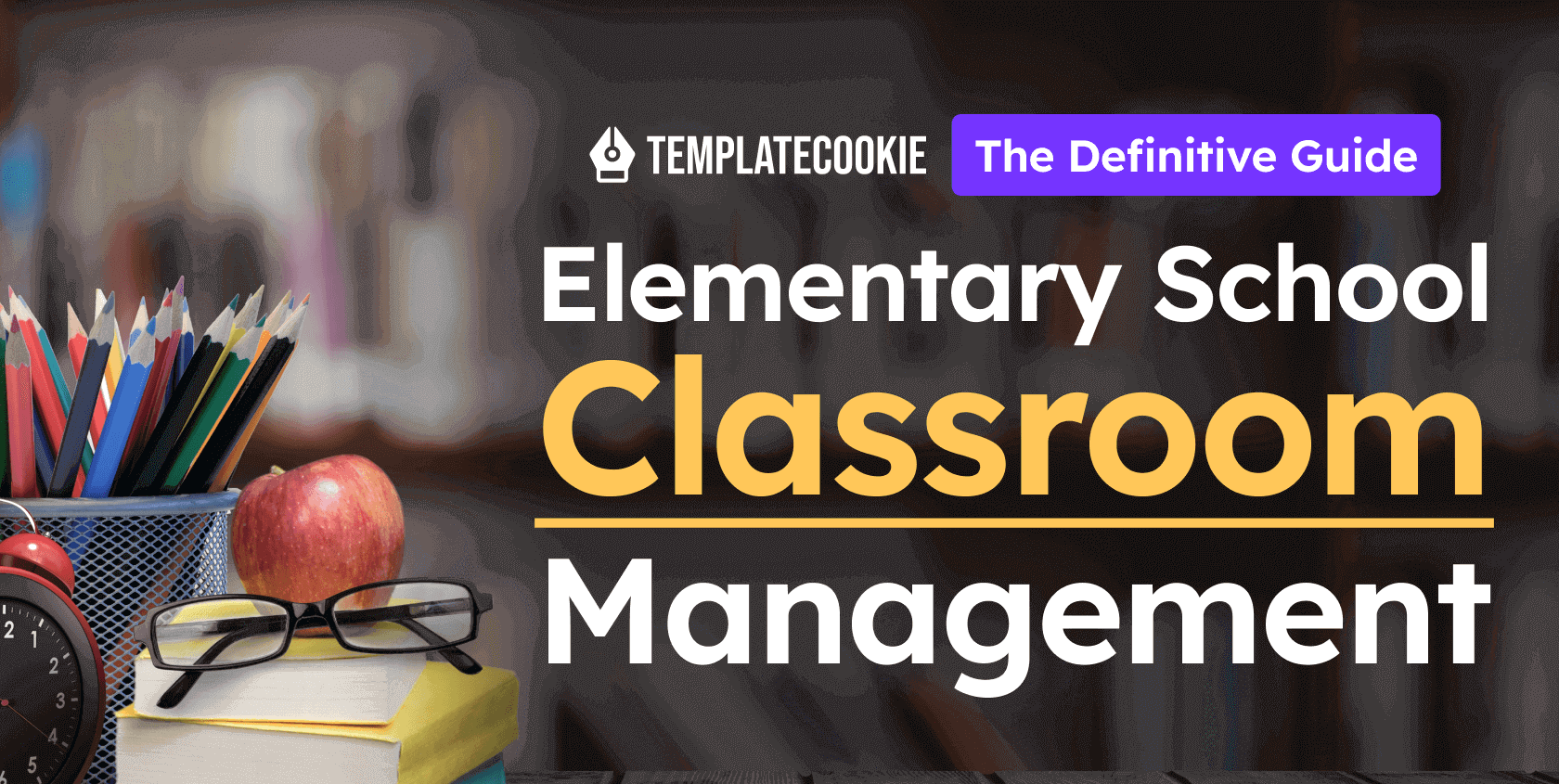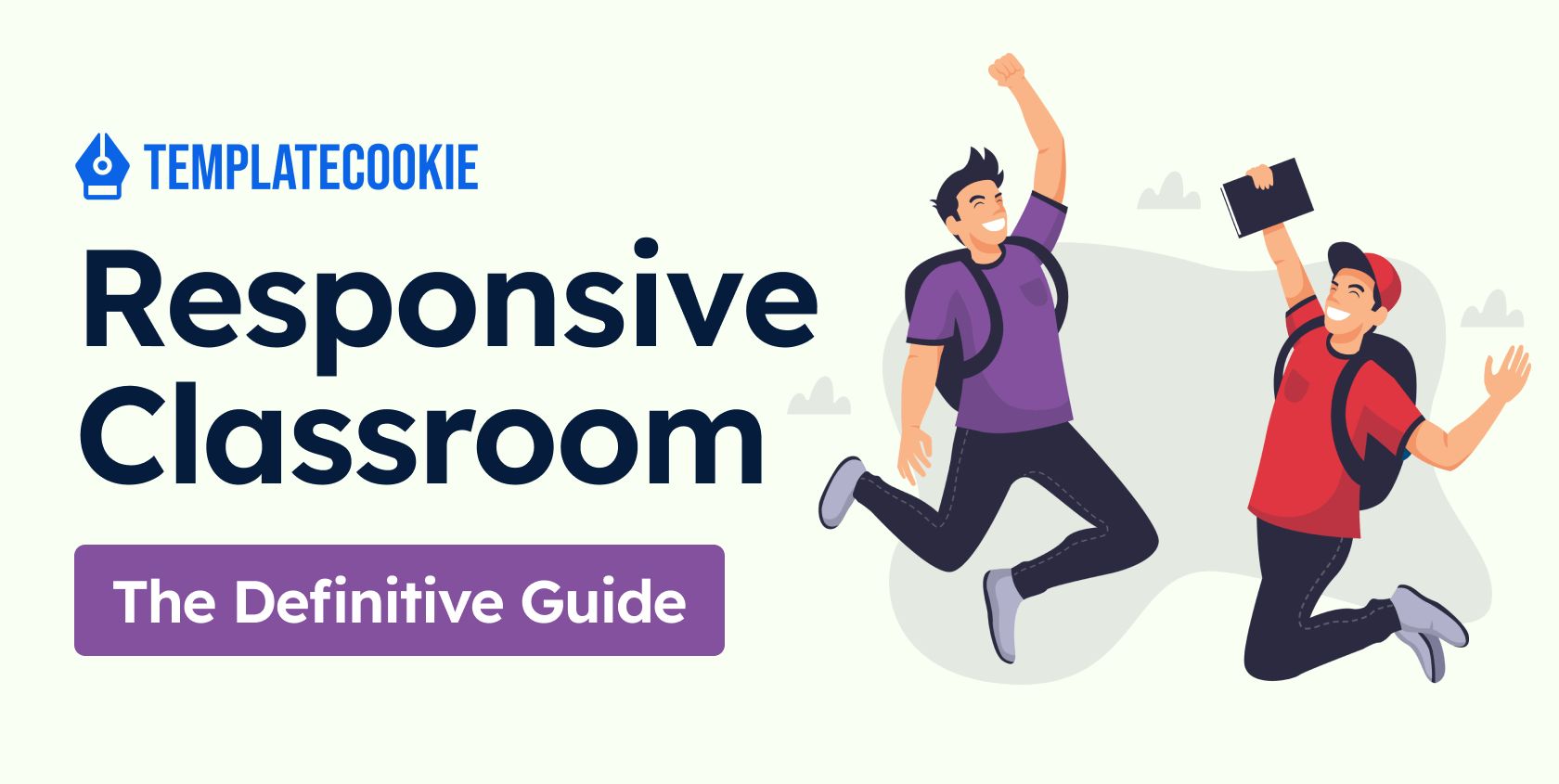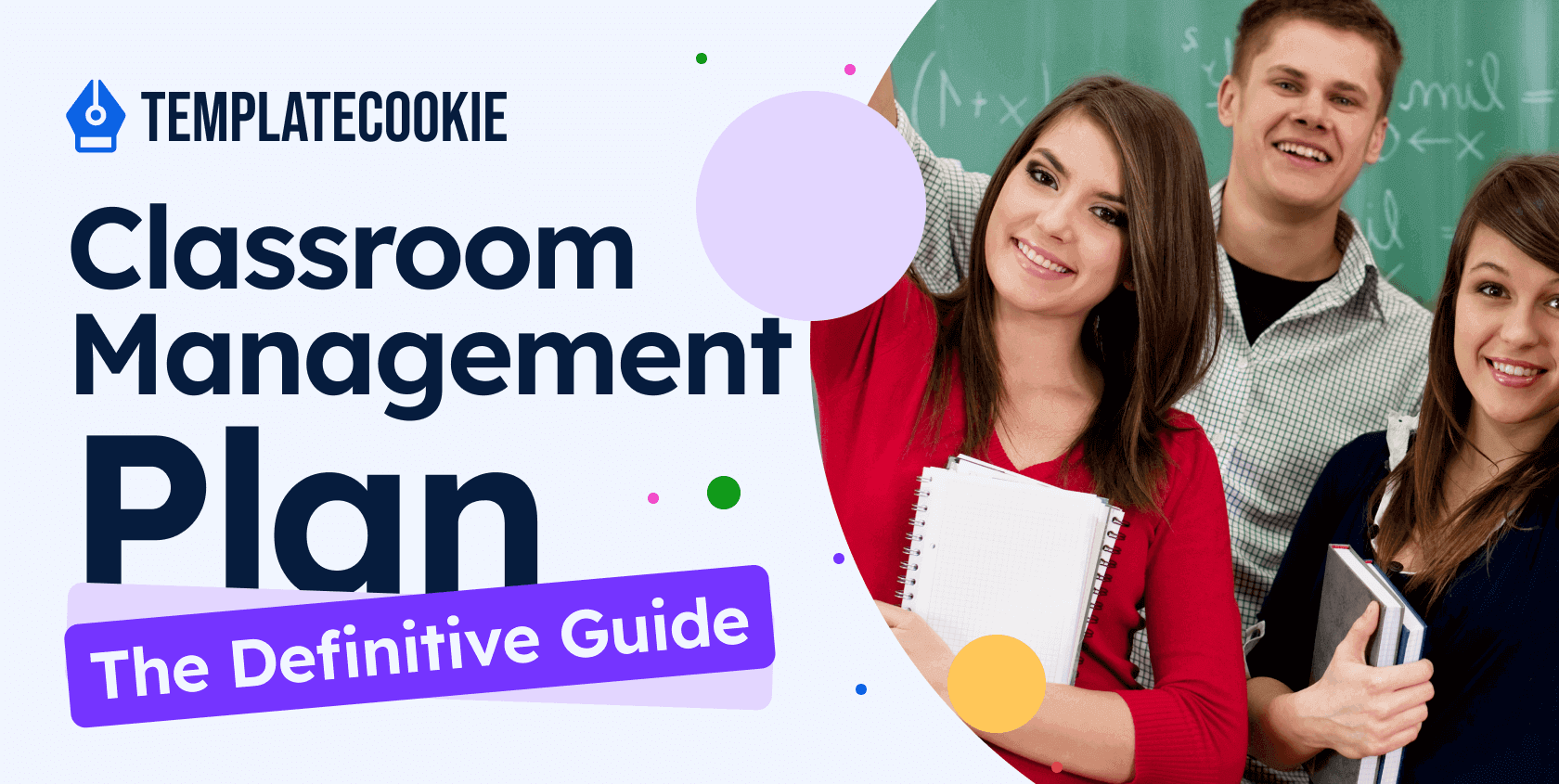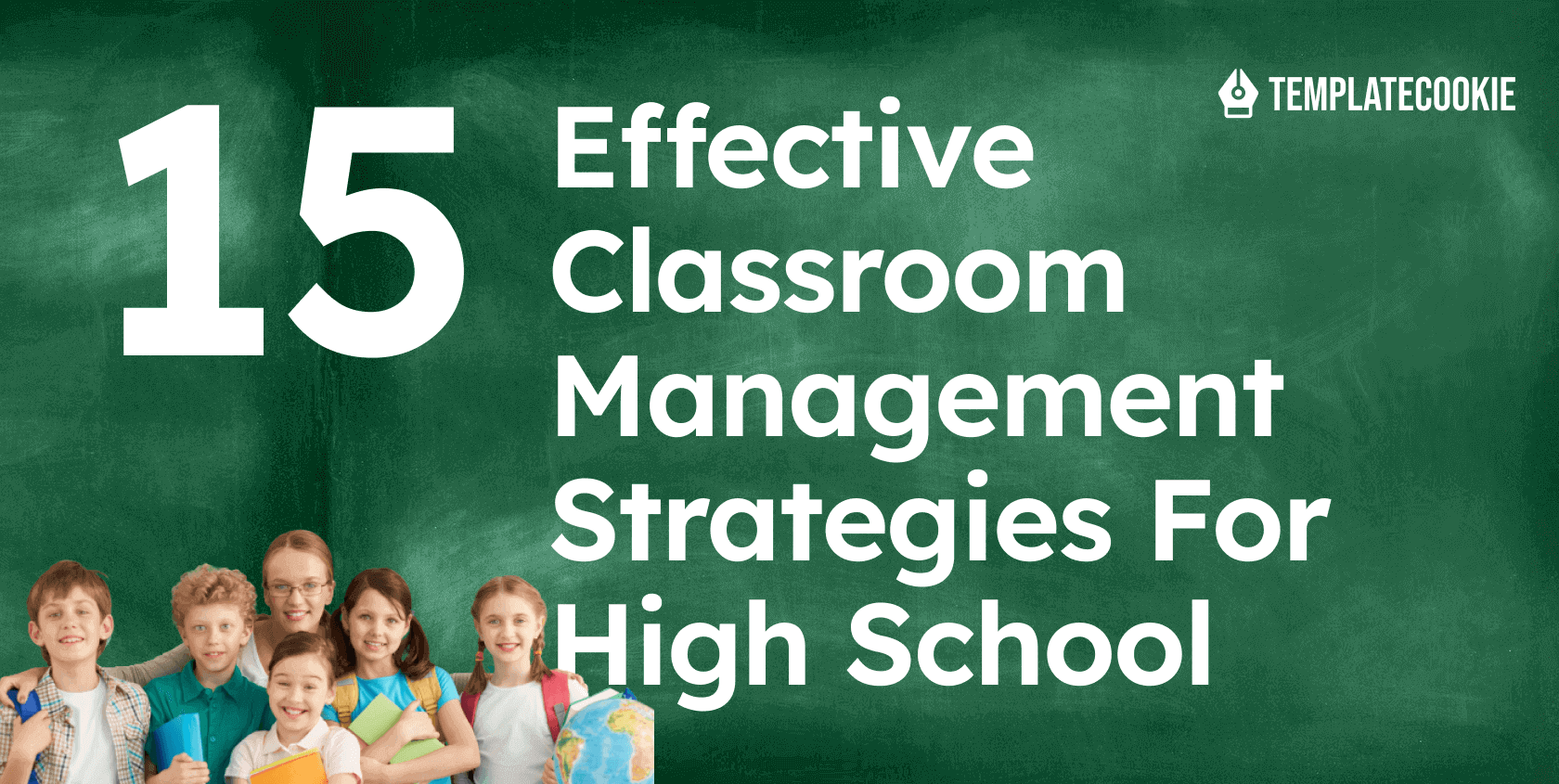Blog Details
Elementary Classroom Management - The Definitive Guide

As an educator, you are responsible for fostering a positive, encouraging, and engaging learning environment for your students.
This guide is designed to equip you with the proper tools, strategies, and techniques to effectively manage your elementary school classroom and ensure that your students are motivated and enthusiastic about learning.
From establishing classroom rules and expectations to organizing the classroom, we will cover all the topics necessary to promote learning and bring out the best in your elementary school students.
Increase your classroom efficiency with our Premium School Management System: Schooling
What is Elementary Classroom Management?
Classroom management is an important part of elementary education. It involves setting rules and expectations, creating a safe and positive learning environment, and providing support for both teachers and students. By understanding the basics of classroom management, teachers can create an effective learning environment that is conducive to learning and development.
Elementary classroom management focuses on creating a structured environment that encourages students to be responsible for their own behavior. This involves setting clear expectations, having clear consequences for misbehavior, and providing positive reinforcement for appropriate behavior.
It also includes developing strong relationships between teachers, students, and parents to ensure that everyone is on the same page. Furthermore, classroom management strategies must be tailored to the individual needs of each student in order to be successful. By taking the time to understand the basics of classroom management, teachers can create a positive and effective classroom environment for their students.
What Are the Goals of Elementary Classroom Management?
Establish Expectations
Establish and clearly communicate expectations for student behavior and performance, such as rules for classroom conduct, respect for others, and academic achievement. Ensure that students understand what is expected of them and why these expectations are important.
Provide Structure
Create a structured environment with consistent rules and routines that are easy to follow. This may include daily schedules, clear expectations for transitions, and consequences for breaking the rules. Use visuals, such as checklists, charts, and posters, to help students remember and follow the rules.
Foster Relationships
Foster positive relationships between teachers, students, and parents. This may include open communication, collaboration, and mutual respect. Encourage students to take responsibility for their learning and behavior, and provide opportunities for them to take ownership of their learning.
Create a Safe Space
Implement strategies that promote a safe and positive learning environment, such as openly addressing bullying, providing emotional support, and encouraging students to express themselves. Create a culture of respect and acceptance and ensure that all students feel valued and accepted.
Encourage Self-Discipline
Help students to develop the skills and self-discipline necessary to be successful. This may include teaching problem-solving skills, providing feedback, and helping students to set their own goals. Encourage students to take responsibility for their actions and provide them with the tools they need to make good choices.
Utilize Positive Reinforcement
Use positive reinforcement to reward and encourage appropriate behavior. This includes verbal praise, tangible rewards, or other forms of recognition. Focus on reinforcing desired behaviors and praising students for their efforts and successes.
Provide Support
Provide support to both teachers and students, including resources, guidance, and professional development. Provide teachers with the training and resources they need to effectively manage the classroom and help students reach their full potential.
Manage Behavior
Develop strategies to effectively manage and respond to inappropriate behavior, such as providing clear consequences, utilizing restorative practices, and addressing issues promptly. Use a variety of strategies to teach students how to make better choices and manage their own behavior.
Promote Engagement
Encourage students to be actively engaged in the learning process, such as through hands-on activities, group work, and providing meaningful feedback. Use a variety of learning styles and methods to engage students and keep them interested.
Reflect and Evaluate
Reflect and evaluate the effectiveness of classroom management strategies on a regular basis. This may involve conducting surveys, observing classrooms, and talking to parents and students. Make changes to the management strategy as needed based on the results of this evaluation.
Related Good Reads
Classroom Management For Middle School - The Definitive Guide
Should Phones Be Allowed In School - Pros, Cons & Solutions
Top 12 Advantages Of School Management System
What Strategies Should Be Used to Implement Elementary Classroom Management?
Establish Rules and Expectations
Clearly communicate to students, parents, and other stakeholders what is expected in terms of behavior and performance, and the consequences for not following the rules and expectations. This can be done through classroom discussions, written rules and expectations, and reinforcing positive behaviors.
Create a Structured Environment
Set up routines and procedures that are easy for students to understand and follow. This includes having a daily schedule, clear expectations for transitions, and consequences for breaking the rules.
Foster Positive Relationships
Build positive relationships between teachers, students, and parents. This includes open communication, collaboration, and mutual respect.
Utilize Positive Reinforcement
Praise and reward students for their positive behavior, and use a variety of methods to ensure that they continue to behave in a positive manner. This includes verbal praise, tangible rewards, or other forms of recognition.
Provide Support
Give teachers and students the support they need to be successful. This may include resources, guidance, and professional development. Offer teachers thetraining and resources they need to effectively manage the classroom and help students reach their full potential.
Implement Behavior Management Strategies
Develop strategies to effectively manage and respond to inappropriate behavior. This includes providing clear consequences, utilizing restorative practices, and addressing issues promptly.
Promote Engagement
Encourage students to be actively engaged in the learning process through hands-on activities, group work, and providing meaningful feedback. Use a variety of learning styles and methods to engage students and keep them interested.
Use Technology
Incorporate technology into the classroom to engage students, promote collaboration, and facilitate learning. This may include using tablets and laptops in the classroom,using online resources, and using technology to create and share content.
Encourage Self-Discipline
Help students develop the skills and self-discipline necessary to be successful. This may include teaching problem-solving skills, providing feedback, and helping students to set their own goals.
Reflect and Evaluate
Evaluate the effectiveness of classroom management strategies on a regular basis. This may involve conducting surveys, observing classrooms, and talking to parents and students. Make changes to the management strategy as needed based on the results of this evaluation.
What Are the Benefits of Elementary Classroom Management?
Improved Student Outcomes
Effective elementary classroom management helps to improve student outcomes by providing students with a safe, structured, and positive learning environment. Clear expectations and consequences for behavior, as well as positive reinforcement for desired behavior, can help to improve student academic engagement, grades, test scores, and social skills.
Increased Teacher Efficiency
Classroom management strategies help teachers to be more efficient by providing them with clear expectations for transitions and behavior, as well as procedures for dealing with issues before they become serious. This allows teachers to focus more on teaching and less on discipline.
Improved Student Behavior
Proper classroom management helps to reduce disruptive behaviors by providing students with clear expectations and consequences for their behavior. When students understand what is expected of them, they are more likely to behave in a positive manner.
Improved Student Engagement
Classroom management strategies promote student engagement by encouraging students to be actively involved in the learning process. This can be accomplished by using a variety of learning styles and methods, providing meaningful feedback, and incorporating technology into the classroom.
Reduced Stress
Classroom management reduces stress for teachers and students by creating a more predictable and organized environment. Clear expectations and consequences help to reduce the amount of time teachers and students have to spend dealing with discipline issues, allowing them to focus more on learning and teaching.
Establish Classroom Rules and Procedures
Establish classroom rules and procedures that are age appropriate, clear, and consistent. Make sure that students understand the rules and expectations and what the consequences are for breaking them. Be consistent and fair when implementing the rules.
Communicate Expectations
Clearly communicate expectations to students in a way they can understand. This includes providing written guidelines or creating visual cues to help students remember the rules and expectations. Make sure to provide appropriate praise and positive reinforcement when students follow the rules.
Create an Effective Learning Environment
Create a classroom environment that encourages learning and is conducive to student success. This may involve providing a variety of resources for students to use, maintaining a clean and organized classroom, and having a seating chart that encourages student engagement.
Implement Behavior Management Strategies
Develop strategies to effectively manage and respond to inappropriate behavior. This includes providing clear consequences, utilizing restorative practices, and addressing issues promptly. Effective behavior management strategies should be consistently enforced and should be adapted to meet the needs of the students.
Promote Engagement
Encourage students to be actively engaged in the learning process through hands-on activities, group work, and providing meaningful feedback. Use a variety of learning styles and methods to engage students and keep them interested. Provide students with meaningful tasks that are appropriate for their age and skill level. Make sure to provide positive reinforcement for desired behaviors.
Conclusion
Elementary classroom management is essential to ensure that all students are engaged and learning in the classroom environment. It involves setting up an environment that is conducive to learning, managing student behavior, and monitoring student progress. By following the above steps, you can ensure effective elementary classroom management strategies and achieve the goals outlined in this article.
Read More

Responsive Classroom - The Definitive Guide
Responsive Classroom is an evidence-based approach to teaching that prioritizes the social, emotional, and academic development of students. It is designed to creat...
Read More
Classroom Management Plan - The Definitive Guide
Managing a classroom is a complex and multifaceted process that requires planning, preparation, and flexibility. A strong classroom management plan is crucial ...
Read More
15 Effective Classroom Management Strategies For High School
High school teachers and administrators face numerous challenges in managing their classrooms, from student disengagement to disruptive behavior. However, with effe...
Read More